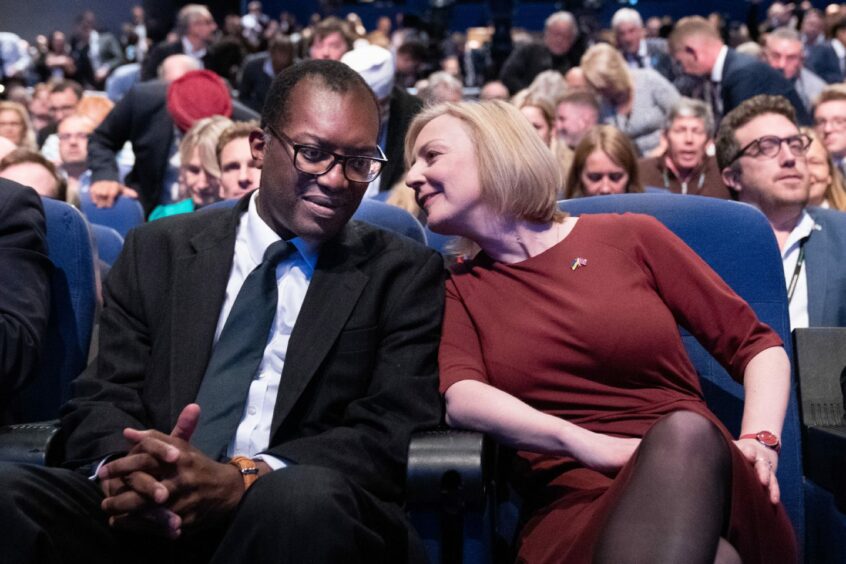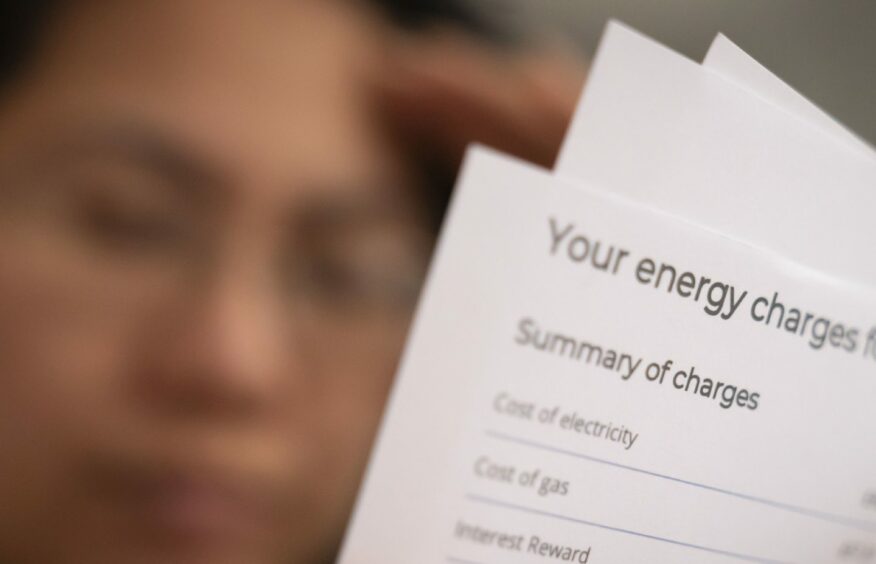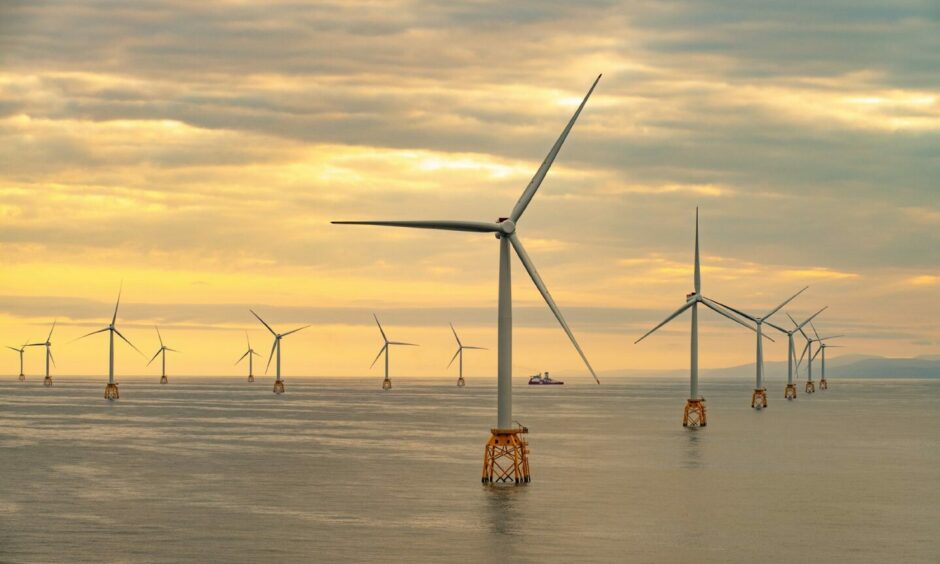Why are electricity and gas prices still connected during the age of renewables? Peter Ranscombe considers whether this year will mark a turning point for the UK’s archaic energy system.
How will history remember Kwasi Kwarteng, the second shortest-serving chancellor who notched up only 38 days in office during Liz Truss’s tumultuous, short-lived administration last autumn?
Will the history books focus on his “fiscal event” – or “not-so-mini Budget” – on September 23? His U-turn on October 3? Or perhaps his sacking on October 14?
One date historians could be forgiven for overlooking came last summer, when Mr Kwarteng was still business secretary – on July 18 he launched his Review of Electricity Market Arrangements (Rema).
It addresses one of the most confusing aspects of the current energy crisis – why electricity prices have soared despite Scotland now generating so much of its “leccy” from renewable energy.
“Has the price of wind gone up?” one wag tweeted last summer.
Expensive gas burners dictate prices
In a nutshell, just under 40% of the UK’s electricity is still generated by burning gas in power stations.
Despite a similar proportion coming from renewable energy, it is the most-expensive form of generation – normally gas – that sets the price paid each half hour for power in the wholesale market.
Balancing supply and demand is a complicated business, and responsibility falls to Network Grid Energy System Operator (ESO), a company split off into a separate business in 2019 from within the wider National Grid Group, with the remainder continuing to operate the high-voltage transmission network in England and Wales, just as ScottishPower and SSE do north of the border.
Tricky balancing act
For decades government policy has tried to solve the “energy trilemma” – balancing cost, carbon, and security of supply to ensure consumers pay affordable prices, while also tackling global warming and keeping the lights on.
Yet energy markets are global, with the ramping up of manufacturing capacity after the coronavirus lockdowns sending prices higher.
Russia’s invasion of Ukraine launched them into orbit, triggering our current cost-of-living and cost-of-trading crises.
After a decade of stagnation, the cost of not reforming Britain’s energy market has been laid bare, with families and businesses paying the price.
Taming power costs is key not only for the electricity currently flowing through our sockets and plugs, but also in the years ahead for transport and heating as electrification accelerates through the switch away from petrol and diesel to electric vehicles, and from natural gas and oil to electric heat pumps.
The consultation closed on October 10, with the Department for Business, Energy and Industrial Strategy (Beis) promising to “publish a consultation response in the winter”.
Over its 130 pages, Mr Kwarteng’s initial consultation on Rema laid out many options for tackling higher prices by reforming the market. These ranged from an evolution of the current structure through to more radical changes.
They include splitting the market into electricity generated by renewables or fossil fuels, or localised marginal pricing (LMP), where local levels of supply and demand are reflected in electricity prices for specific locations.
LMP could lead to energy retailers offering homes and businesses cheaper prices when demand is low, or to wind farms being developed close to big power users – such as aluminium smelters, for example – if there is a lack of supply in the local area.
No one-size-fits-all approach
The Energy Systems Catapult (ESC), one of the innovation centres set up by the Conservative-Liberal Democrat coalition, studied how LMP is already being used in the US and New Zealand.
Ben Shafran, the ESC’s head of markets, policy, and regulation, said: “LMP is a tried-and-tested model.
“There’s no one-size-fits-all approach, so Great Britain can’t just copy the system used in California or other American states.
“But we can learn a hell of a lot from what’s been done, and it would mean we’re not starting from scratch.”
Mr Shafran added: “It’s also important the Rema wholesale market review is tied into reform of the retail market – handling them separately would be like redoing the pipes in your bathroom but then plumbing the same bathroom suite back in again.
“It would be good to see Beis taking the big decisions on market reform as soon as possible so that we can hit the 2035 target of decarbonising the electricity network, rather than waiting to sort out every single last detail.”
Renewables are now key to ensuring secure and affordable electricity supplies.”
Paul Drummon, senior research fellow, University College London.
Last November, University College London (UCL) and the Aldersgate Group – an alliance of academic, business and civic leaders – outlined the case for splitting the market to create a “green power pool”.
They suggested electricity generated by renewable energy projects covered by contracts for difference (CfD) – which control the price paid for their power – could be sold to vulnerable households and businesses.
Renewables ‘key’ to more secure and affordable energy
At the time, UCL senior research fellow Paul Drummond – who, along with Professor Michael Grubb, had previously sketched out ways to split the market – said: “Renewables are now key to ensuring secure and affordable electricity supplies.
“Establishing a green power pool can help us facilitate and exploit the opportunities a rapidly-decarbonising electricity system offers, de-link the price of electricity from the volatile price of gas and reduce bills for consumers.”
Trade body Scottish Renewables (SR), which represents 320 members, favours developing the existing market over more radical reforms, such as LMP or a split market.
It highlighted the need to reinforce the grid now – so it can transport electricity from wind farms and other renewable power generators to big cities and other heavy energy users – because the network needs to expand, no matter Rema’s outcome.
A renewables-based energy system is the obvious and achievable solution to our energy and security issues – and making it happen is one of the defining challenges of our age. Join the discussion with industry experts at #SRNZEC23: https://t.co/rNGhDnfGxh. pic.twitter.com/DwV4XGo2Hv
— Scottish Renewables (@ScotRenew) January 10, 2023
SR also emphasised the need for market reforms to support both short-term energy storage in batteries and long-term pumped-storage hydro-electricity schemes, which could bring an economic boost to the Highlands and help to balance the electricity grid.
This would compensate for all those dull, still days when the sun doesn’t shine and the wind doesn’t blow.
SR economics and markets policy manager Andrew MacNish said: “LMP works well in theory under certain conditions, but generators and consumers aren’t as free to relocate in response to price signals as its models assume, and the risks involved in this type of radical reform will hinder investment and undermine our ability to meet decarbonisation targets.
“There’s a danger with LMP that it would encourage offshore wind farms to locate close to demand centres in south-east England – rather than around Scotland, where the greatest wind resources are.
“Splitting the market is an interesting idea, but it is as yet unclear how it would work in practice.
“Many of the supposed benefits of a split market could be achieved via other means, like evolving the CfD scheme.”
Further consultation ahead
Beis told The Press and Journal it received 225 responses to its initial Rema consultation.
“A summary of the responses will be published early this year, with further consultation expected in 2023 as we continue to develop and refine options for reform,” a Beis spokesman added.







Conversation